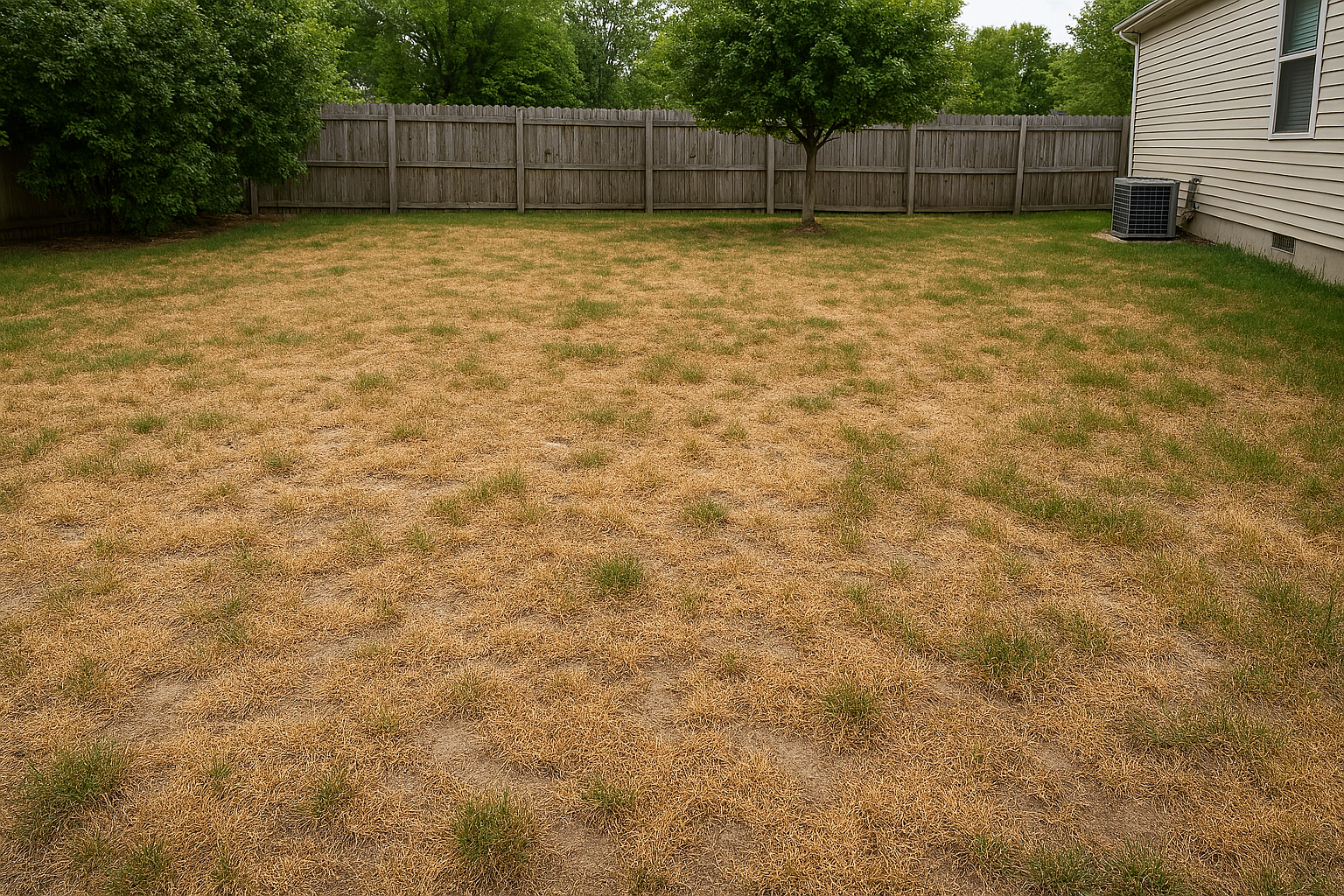Is your lawn looking more like a hayfield than a lush green carpet? You’re not alone. Southeast Michigan is feeling the heat—literally. With over 1.3 million residents currently living in drought-affected areas 1, lawns across the region are showing serious signs of stress. But don’t worry—we’ve got your back with expert tips to help your turf survive and thrive.
What Drought Does to Your Lawn
When water is scarce, your lawn goes into survival mode. Here’s what you might notice:
- Brown patches that spread quickly
- Crunchy, brittle grass blades
- Weeds taking over (they love dry soil!)
- Thin or bare spots where grass has died off
This isn’t just about looks—drought weakens your lawn’s root system, making it more vulnerable to pests, disease, and long-term damage.
What’s Happening in Southeast Michigan?
According to the latest data from the U.S. Drought Monitor, Southeast Michigan is experiencing moderate drought (D1) conditions. That means lawns are stressed, water tables are dropping, and rainfall has been below average. While Michigan usually enjoys evenly distributed precipitation, recent “flash droughts” have hit hard and fast.

How to Help Your Lawn Bounce Back
Here’s what you can do—starting today:
1. Water Wisely
Keeping your lawn hydrated during a drought is all about timing and technique:
- Water early in the morning—between 4 a.m. and 9 a.m.—to reduce evaporation and give your lawn time to absorb moisture before the heat kicks in.
- Your lawn needs about 1 to 1.5 inches of water per week. Instead of watering a little every day, do one or two deep waterings each week. This encourages deeper root growth and better drought resistance.
- Not sure how much water you're using? Place a tuna can or rain gauge on your lawn while watering. Once it fills to 1 inch, you’ve hit your target!
2. Mow Your Grass Tall
Cutting your lawn too short during a drought can actually make things worse. Here’s what to do instead:
-
Set your mower blade to 3 inches or higher
Taller grass helps protect the soil from the sun and keeps it cooler.
Why it matters:
Longer blades of grass shade the soil, which helps it hold moisture longer. Plus, it encourages your grass to grow deeper roots, making it stronger and more drought-resistant.
3. Leave Your Grass Clippings on the Lawn
After mowing, don’t bag up those clippings—let them stay on the lawn!
- Why? Grass clippings are made up of about 80-85% water, so they help keep your lawn hydrated.
As they break down, they return nutrients to the soil naturally. They release natural nutrients like nitrogen, phosphorus, and potassium back into the soil. - This helps your lawn stay healthy, green, and drought-resistant, especially during dry weather.

4. Skip the Fertilizer (for now)
We love fertilizer (it’s kind of our thing!), but during a drought, timing is everything.
- If your lawn is looking brown, don’t panic—it’s probably just dormant, not dead. Dormancy is your lawn’s way of protecting itself during dry conditions. Fertilizing now can actually do more harm than good because it pushes the grass to grow when it doesn’t have enough water to support it.
- Fertilizer needs water to work properly. Without enough moisture, it can burn the grass or force it to grow when it should be conserving energy.
- Best move? Wait until conditions improve and your lawn is actively growing again. That’s the perfect time to fertilize and help it bounce back stronger
5. Let Your Lawn Take a Break
When drought hits, your lawn might slow down and turn brown—and that’s okay! Instead of rushing to fix it, the best thing you can do is give it space and gentle support:
- Keep up with occasional light watering to help the roots stay alive.
- Avoid heavy foot traffic or mowing too often. Dormant lawns are more fragile and need time to rest.
- Remember, dormancy is your lawn’s natural way of protecting itself when water is scarce.
- It’s like your grass hitting the snooze button until weather conditions improve.
Pro Tip: Once the drought ends, your lawn will green up again with proper care—no need to panic or overwater!
